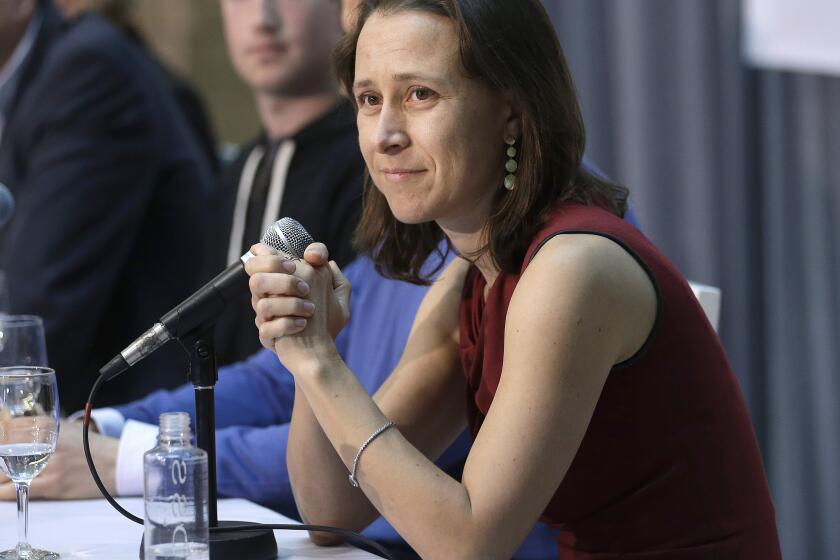State Wants to Ease Aerospace Firms’ Woes, Wilson Says
- Share via
Gov. Pete Wilson told California’s top aerospace executives Tuesday that he would attempt to stem an exodus of aerospace jobs by improving political support for the industry and reducing the economic burden of doing business in the state.
The extraordinary two-hour summit meeting in Sacramento with top executives from 14 major aerospace firms was described by participants as just a “first step” in resolving conditions that have led firms to relocate an estimated 18,000 aerospace jobs out of the state in the 1980s.
“I think the governor is genuinely committed to resolving some of these problems and keeping California as the leader of the aerospace business,” Douglas Aircraft President Robert Hood said after the session. “The governor is committed to the leadership it takes at his level to doing something about the issue.”
Wilson said he would support major defense programs located in the state by attempting to bring some unity to the often fractious California congressional delegation.
Meanwhile, the aerospace companies said they would attempt to increase the political pressure on members of the delegation by holding them accountable to the 1.4 million workers whose jobs are tied to the industry.
“In the past, there was the perception in the industry that the state did not care about their concerns,” said Carl Covitz, secretary of business, transportation and housing, who attended the meeting. “The first thing to come out of this meeting is the recognition by the industry that we do care about their concerns. We won’t have overnight success, but we have raised the visibility of the issue.”
In addition to Hood, the meeting was attended by Rockwell International Chairman Donald Beall, Northrop Chairman Kent Kresa, Lockheed Chairman Daniel Tellep and Hughes Aircraft President D. Kenneth Richardson, among others. It was, by most accounts, one of the few times so many top aerospace executives attended a single meeting together.
A number of executives brought lists of specific concerns. According to briefing charts presented in Sacramento by Hood, for instance, Douglas’ costs for safety, health and environmental regulation have increased to $33 million in 1991 from $15 million in 1986. It took the firm six to 12 months to get new environmental permits and it is spending $5 million to improve roads in Long Beach.
Hood said the industry would be setting up a council to begin long-term work on obtaining economic relief from such regulatory demands.
He also confirmed that Wilson challenged the industry to mobilize its workers to increase their voice in the political process.
“He challenged us to do it. We have to do it. I don’t like the alternative,” Hood said.
Hood said it was too late for Douglas to reopen the issue of the MD-12X, the firm’s next generation commercial transport that is almost certain to be built at a new plant outside California. But he said the firm would be building aircraft in California for years to come, including the MD-90, a jetliner that is still on the drawing boards.
The Sacramento meeting came about, in part, through the efforts of a small Long Beach subcontractor, Ron Cedillos, a major Republican Party fund-raiser. Cedillos said the session marked the first time that many aerospace leaders felt as if California had courted them.
“We feel like we are dealing with a new administration that is going to be very, very supportive,” Cedillos said following the meeting. “We know we have a government actively seeking ways for us to stay in California and we didn’t know that before.”
More to Read
Inside the business of entertainment
The Wide Shot brings you news, analysis and insights on everything from streaming wars to production — and what it all means for the future.
You may occasionally receive promotional content from the Los Angeles Times.











